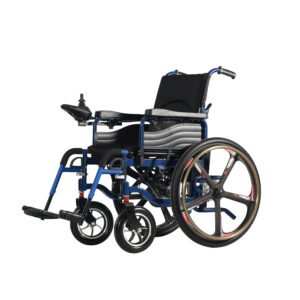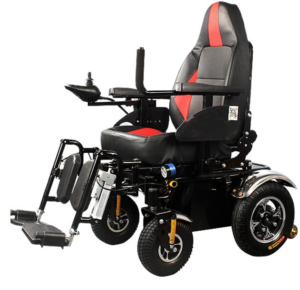Both bariatric wheelchairs and heavy-duty wheelchairs are heavier and less portable wheelchairs, but there are major differences.
Bariatric Wheelchair
Functional characteristics
Bariatric wheelchairs are mainly designed for heavier people and can carry larger weights to meet the daily mobility needs of obese people. For example, most bariatric power wheelchairs can carry users weighing 300 pounds or even heavier, and some bariatric wheelchairs have different carrying levels, such as 300 pounds, 400 pounds, 450 pounds, 600 pounds, 1,000 pounds, and other various specifications to meet the needs of users with different weight ranges.

Structural designers
The bariatric wheelchair structure is designed to be more robust and sturdy than a regular power wheelchair, and the seat is wider to ensure safety and reliability when carrying heavier users. The frame is often made of high-strength carbon steel to ensure the wheelchair can carry sufficient weight.
Heavy duty wheelchair
Functional characteristics

Heavy-duty wheelchairs pay more attention to comfort, the seat of heavy duty wheelchair is not as wide as the seat of a bariatric wheelchair, but it usually has more humanized functions, such as a thicker cushion, which makes the user sit more comfortably; high backrest reclining design, which is suitable for long time riding or users who need to take a rest. The high backrest can be reclined, which is suitable for users who need to take a long ride or rest. Some heavy-duty power wheelchairs are equipped with six shock absorbers and pneumatic rear tires, which make them have good shock absorption effects and can cope with various road conditions, so users have a better riding experience.
Good stability
Due to the wheelchair itself being heavier, the chassis is relatively more stable and solid, giving people a sense of security, more stable in the driving process, for example, in a turn or through uneven road surfaces is not easy to roll over or sway.
